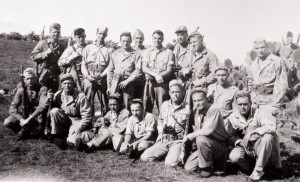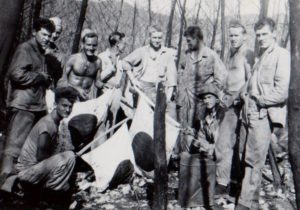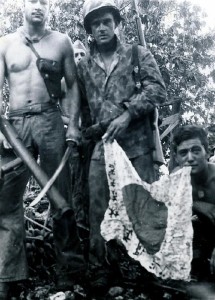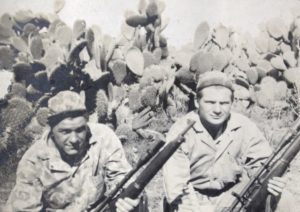
HOME
Pioneer PBS Postcards’ “40 Thieves on Saipan: A Son Discovers his Father’s True Story” An Upper Midwest Emmy Award Winner
This true story concerns the 6th Marine Regiment’s select and elite Scout-Sniper Platoon on Saipan, and their role in the brutal Battle for Saipan, which was D-Day in the Pacific. The narrative follows them from their inception at Camp Tarawa on Hawaii, through the battle for Saipan, and eventually to the difficulties of returning home.
MARINE METHODS
The poorest equipped branch of service, Marines of WWII were notorious thieves. To better their odds for victory against the Japanese, they found it necessary to improvise their supply chains through “Marine Methods,” more commonly known as thievery. Being the select and elite of the 6th Marines, the Scout-Sniper Platoon excelled at the craft, making them the bane of existence for the better-supplied Army and Navy. Their light-fingered exploits quickly became the envy of their fellow Marines, and earned them the nickname of the “40 Thieves” from their admiring peers.
SCOUT-SNIPER PLATOON
After the bombing of Pearl Harbor, Scout-Sniper Schools were quickly established in the States where Marine and Navy volunteers began training in classrooms. But this fledgling band of thieves, the grandfathers of Navy SEALs, learned their lessons on the job, making every man in this platoon an original American sniper, long before Chris Kyle.
The first link in the chain of Japanese home islands, Saipan was of great strategic importance to both sides. For Japan, the loss of the island would sever the lines of communication between Tokyo and its bases farther west, and if the Allies prevailed, two of the finest airfields in the Pacific would fall into their possession, putting Tokyo within striking distance of the B-29 Superfortresses.
Consequently, the Imperial Army would defend Saipan to the last man, making this invasion the bloodiest of the Pacific war to date. Over 15,000 Marines would be killed or wounded while taking the island from the 30,000 Japanese who would rather die than surrender.
CREATION
40 Thieves: Saipan was conceived from the letters, photographs, diaries, and personal memories of these men, who had lived a lifetime by the age of nineteen. The images and memories from those two barbaric years of their youth would haunt them for the rest of their lives.









